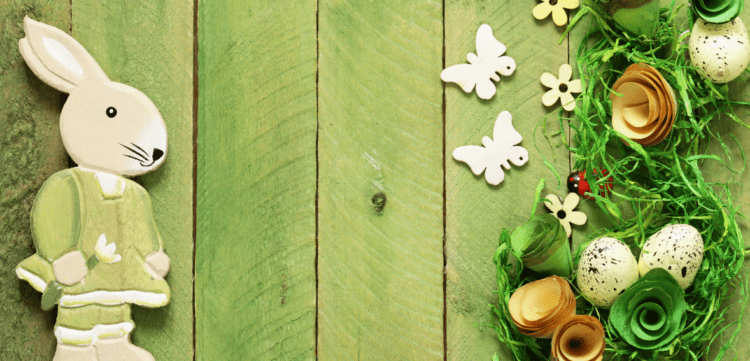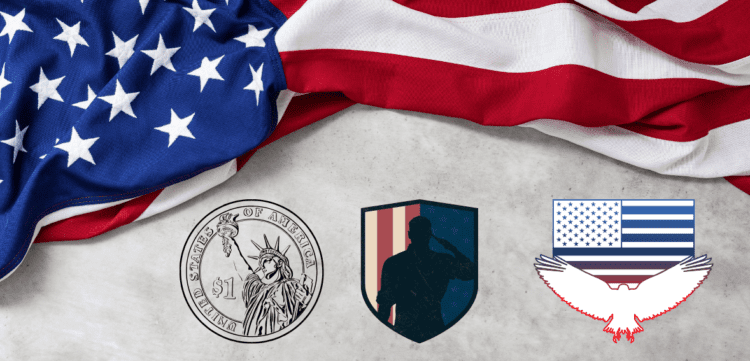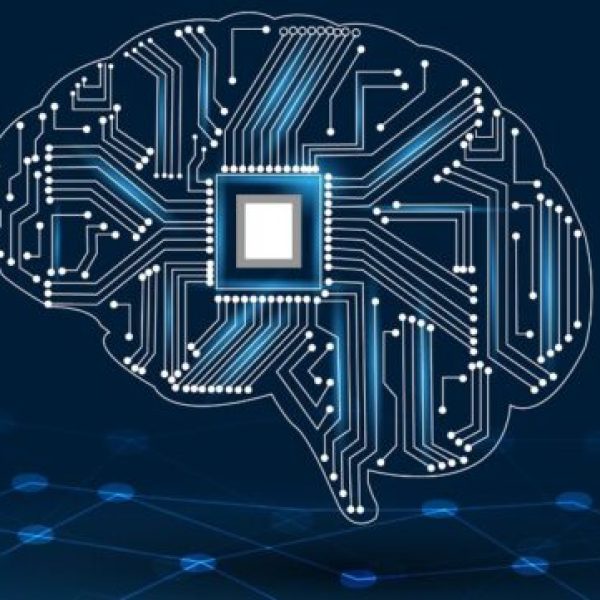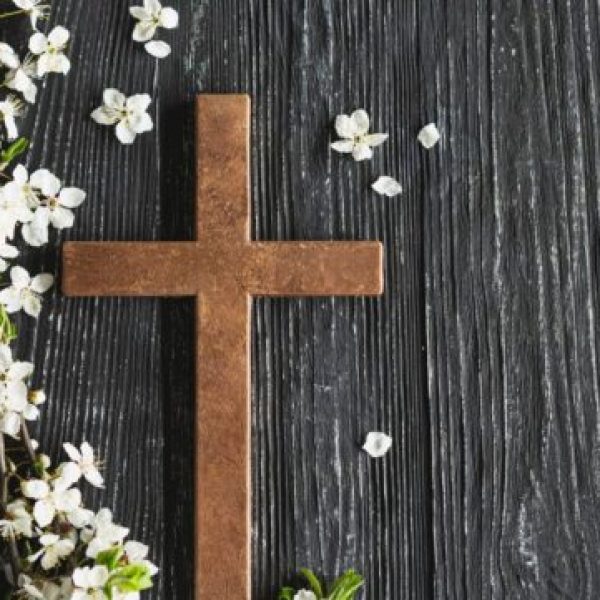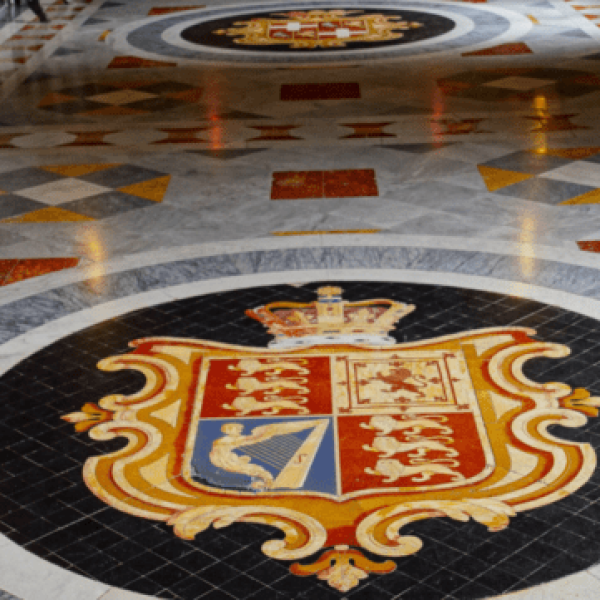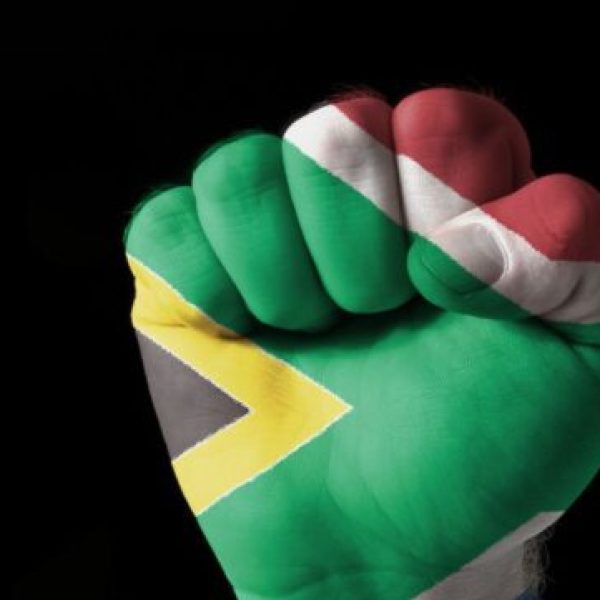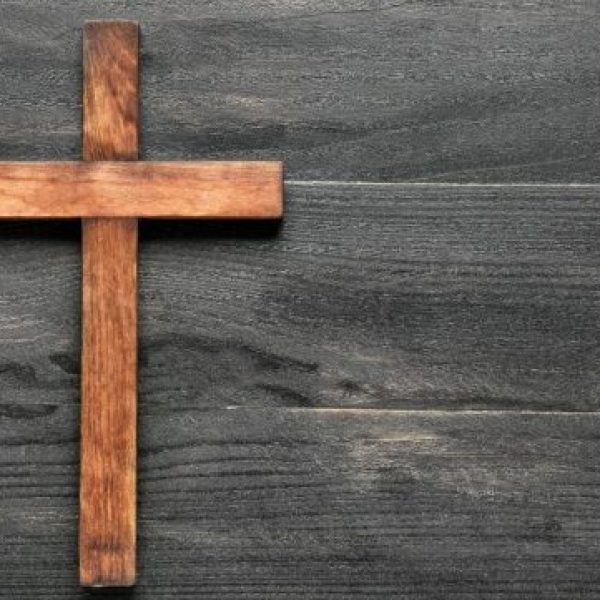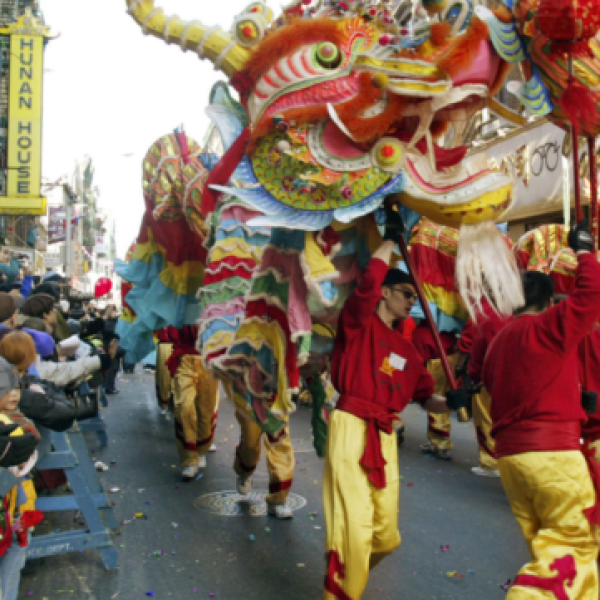Easter, a principal Christian holiday, commemorates the resurrection of Jesus Christ, marking a pivotal moment in Christian theology. Celebrated with joy and reverence across the globe, Easter not only reflects the promise of spiritual renewal but also heralds the arrival of spring. Intriguingly, many Easter customs and Easter symbols, such as eggs and rabbits, have origins that extend far beyond the dawn of Christianity. These elements were integral to various ancient festivals that celebrated the rejuvenation of the earth after the harsh winter months.
By delving into the historical tapestry of these practices, we gain a more comprehensive understanding of Easter, revealing a rich interplay between ancient traditions and Christian beliefs. This exploration not only enriches our appreciation of the holiday but also illuminates how cultural interchange has shaped and enriched our modern celebrations.
The Historical Context and Origins of Easter
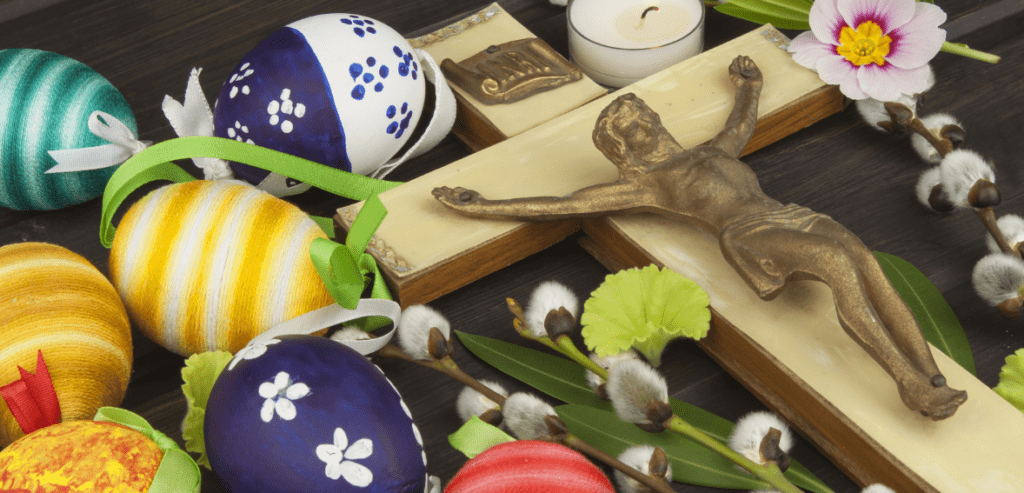
Origins of the Name “Easter”
The term “Easter” has long been a subject of scholarly discussion and debate. According to the Venerable Bede, a renowned 8th-century English monk and scholar, the name “Easter” is derived from Eostre (or Ostara), a goddess in Teutonic mythology who represents the spring and fertility. Bede’s writings suggest that the month, which the Anglo-Saxons called Eostur-monath (the month of opens), was named after the goddess. While this etymological connection is widely debated and considered speculative by some historians, it underscores the festival’s deep roots in the theme of renewal and rebirth that pervade many springtime celebrations.
This potential pagan origin of the name points to the intertwining of Christian and pre-Christian traditions in the celebration of Easter, particularly the universal symbols of new life and nature’s awakening which are echoed in the Christian resurrection narrative.
Determining the Date of Easter
The method for determining the date of Easter was established by the Council of Nicaea in 325 AD, marking a significant moment in Christian history. The council decreed that Easter should be celebrated on the first Sunday following the first full moon after the vernal equinox—the moment in spring when day and night are of equal length, typically occurring on March 21st. This method of dating Easter effectively aligns the celebration with the lunar cycle, similar to many ancient festivals which also depended on astronomical events.
The use of lunar phases in setting Easter’s date connects it not only to Christian tradition but also to older, lunar-based calendrical systems used by various ancient cultures. This astronomical approach highlights how deeply interwoven the festival is with the natural world and its cycles.
By linking Easter to both solar and lunar events, the celebration gains a rich complexity that embraces themes of light overcoming darkness, life from death, and nature’s renewal—themes that are central to the Easter celebration and embodied in many Easter Symbols and Meanings. This connection underscores the blend of Christian rites with broader, universal themes of rebirth that resonate across different cultures and epochs.
Pagan Origins and Christian Integration
The Easter Bunny: From Ancient Symbol to Modern Icon
The figure of the Easter Bunny, often associated with the festive joy of Easter, has deep roots that trace back to ancient fertility symbols. The hare, known for its remarkable reproductive capacity, was revered as a potent symbol of new life and renewal during the spring season. This connection between hares and renewal is evident in various ancient cultures, including those of the Celts and Saxons, where the hare was linked to deities of fertility and springtime.
The transformation from a simple pagan symbol to a Christian Easter icon is a fascinating tale of cultural evolution. German immigrants are credited with bringing the tradition of the “Osterhase,” a mythical hare that lays colored eggs, to the United States in the 1700s. This legend was readily embraced and became a central part of the Easter celebrations, evolving into what we now recognize as the Easter Bunny. This figure not only delivers colored eggs but also candies and gifts to children, symbolizing the burgeoning life and joy of the season.
Easter Eggs: Ancient Symbols of Renewal
Eggs, like the hare, are universal symbols of new life and potential. Long before their association with Christian Easter, eggs were regarded as sacred by various ancient civilizations. The Persians, for instance, exchanged eggs during the spring equinox as a celebration of Nooruz, marking the new year. Similarly, in ancient Egypt and Rome, eggs symbolized the rebirth of the earth and were used in communal festivals and rites.
The incorporation of eggs into Easter customs is a vivid example of how pagan elements were adapted into Christian traditions. During Easter, eggs take on a profound significance, symbolizing the resurrection of Jesus Christ from the tomb. This adaptation reflects a harmonious blend of earlier pagan customs celebrating earthly renewal with the Christian celebration of spiritual renewal. Through the Easter Symbols and Meanings embedded in these traditions, we see a beautiful tapestry of cultural and religious synthesis that enriches the observance of this springtime festival.
Christian Symbols of Easter
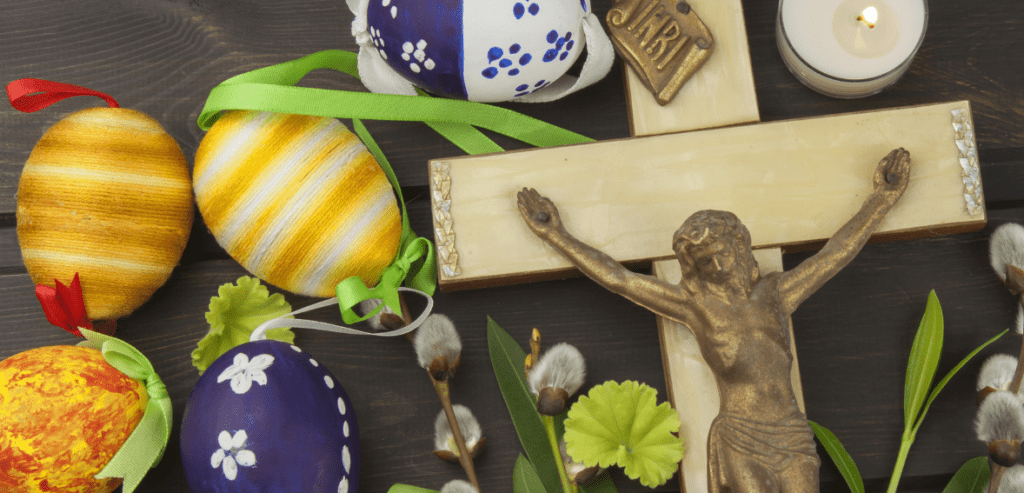
The Lamb of God: A Beacon of Sacrifice and Redemption
The “Lamb of God” is a profound symbol within the Easter celebration, intricately linked to the Jewish tradition of Passover. During Passover, lambs were sacrificed as a divine ordinance to protect the Israelites from God’s judgment. This act of sacrifice is mirrored in the Christian context, where the lamb symbolizes Jesus Christ as the ultimate sacrificial figure. Known as the “Lamb of God,” Jesus is believed to have been sacrificed to atone for the sins of humanity, thereby sparing them from spiritual and eternal condemnation.
This symbol not only highlights the theme of sacrifice but also emphasizes the redemption that is central to the Easter narrative, portraying Jesus as the pure and sinless lamb who redeems the world through His suffering.
The Cross: The Quintessential Emblem of Suffering and Salvation
The cross stands as the most poignant and universally recognized symbol of Easter. It directly represents the crucifixion of Jesus Christ and, subsequently, His resurrection three days later. This powerful emblem encapsulates the core of Christian faith, illustrating the profound dual themes of suffering and salvation. On one hand, the cross recalls the agony and suffering endured by Christ on behalf of humanity. On the other, it celebrates the triumphant promise of resurrection and eternal life, offering hope and renewal to believers.
As such, the cross is not just a symbol of death, but a testament to life and the indomitable spirit of faith that defines the Christian celebration of Easter. Through this symbol, the essence of Easter is conveyed, melding sorrow with joy and defeat with victory, embodying the profound spiritual journey from death into new life.
This exploration of Easter Symbols and Meanings reveals how deeply the symbols of the Lamb and the Cross are woven into the fabric of Easter, serving as powerful metaphors for sacrifice, redemption, and renewal.
Rituals and Customs
New Clothes: Robes of Renewal
In many cultures, the act of wearing new garments during significant occasions marks a symbolic transition or renewal. This practice is deeply ingrained in the celebration of Easter, primarily originating from the early Christian tradition. During ancient times, the Easter festival was a period when new converts to Christianity were baptized. These initiates often wore white robes during their baptism to symbolize their new life free from past sins, embodying purity and a fresh beginning.
This venerable tradition has evolved over the centuries but still retains its core symbolism. In contemporary celebrations, donning new clothes at Easter is not just about following a custom but is seen as an emblem of personal renewal and optimistic anticipation for the future. It reflects a desire to present oneself in a renewed light, mirroring the rebirth theme that Easter encapsulates.
Easter Lilies: Icons of Purity
The Easter lily, a prominent floral symbol associated with this holy season, carries with it a rich history and profound symbolism. Introduced to the American floral scene in the late 19th century by a World War I soldier, these lilies quickly became associated with Easter celebrations due to their dramatic and timely blooming during this season. Traditionally, Easter lilies are regarded as icons of purity, virtue, and innocence, attributes often associated with the Virgin Mary in Christian iconography. The pristine white of the lily petals symbolizes the purity of Christ, and their trumpet-like shape is said to herald the resurrection of Jesus, proclaiming triumph over death.
As such, these lilies are not just popular decorations but are deeply imbued with spiritual meaning, making them an integral part of Easter Symbols and Meanings. Their presence in homes and churches not only beautifies the surroundings but also serves as a poignant reminder of the purity and resurrection of Christ, central tenets of the Easter celebration.
Integration of Cultural and Religious Elements in Easter Celebrations

Sunrise Services: A Symbolic Dawn Ritual
Originating with the Moravian Church in 1732, sunrise services on Easter morning are deeply emblematic rituals that represent the discovery of the empty tomb by the women at dawn. These services are not just typical religious observances; they are a poignant fusion of liturgical practice and the natural symbolism of a new day beginning. Held outdoors at sunrise, these services align the timing of the worship with the scriptural account of the Resurrection, thereby immersing participants in a sensory and spiritual re-enactment of one of Christianity’s most sacred moments. The practice has spread widely among various Christian denominations and has become a cornerstone of Easter traditions, reflecting themes of renewal, hope, and spiritual awakening.
Easter Parades: Celebratory Public Displays
The tradition of Easter parades has its roots in mid-19th-century Europe and has since evolved into a vibrant public celebration observed in many parts of the world. Originally, these parades were an opportunity for communities to come together and celebrate the end of Lent and the arrival of spring. Participants often wear bright, new clothes, which symbolize rebirth and new beginnings, reminiscent of ancient spring processions that marked the changing of the seasons.
These parades have grown in scope and spectacle, often featuring elaborate floats, musical performances, and community festivities that draw on local customs and modern influences. The Easter parade serves as a dynamic expression of communal joy and spirituality, showcasing the cultural diversity and creativity of its participants while still honoring the religious significance of Easter.
Conclusion
Easter, with its rich tapestry of symbols and customs, is a celebration that transcends the simple commemoration of a religious event. The holiday is a vivid intersection of ancient and modern, pagan and Christian, symbolizing a universal message of renewal, hope, and rebirth. From the etymological roots of its name to the deep-seated traditions like the Easter Bunny and eggs, the festival integrates elements that reach far back into human history, echoing the universal human experiences of change and continuity. These symbols, whether they are the deeply spiritual Cross and Lamb of God or the culturally enriched practices of Easter parades and sunrise services, all contribute to a layered and profound celebration.
The symbols and customs of Easter do more than just define the holiday; they connect it to broader themes that are common across cultures and epochs. They bridge the gap between seasons and reasons, celebrating the natural world’s awakening and the spiritual renewal of individuals and communities. They remind us that life’s cycles of death and rebirth are both natural and transcendent, offering hope and new beginnings to all who embrace their meanings.
As we celebrate Easter, we are reminded of the importance of cultural and spiritual synthesis. It is a time for reflection on how ancient symbols can still hold powerful meanings in our modern lives, how traditions can evolve yet remain deeply resonant, and how the celebration of Easter can be a confluence of the past and the present, inviting all to look forward to a future bright with potential and renewal. Through the Easter celebration, we see not only the reflection of our past but also the hopeful gaze toward what we can become.
Frequently Asked Questions:
What is the origin of the name “Easter”?
The name “Easter” is believed to have originated from Eostre (or Ostara), a goddess in Teutonic mythology who represents spring and fertility. This connection, first documented by the Venerable Bede, an 8th-century English monk, suggests that the festival’s naming could reflect the influence of pre-Christian springtime celebrations focused on renewal and rebirth.
How did the Easter Bunny become associated with Easter?
The Easter Bunny has its origins in pre-Christian fertility lore. The hare, known for its high reproductive rate, was an ancient symbol of new life and renewal. This symbol was eventually incorporated into Christian Easter celebrations, notably through German immigrants who brought the tradition of the “Osterhase,” a hare that delivers eggs, to America in the 1700s.
Why are eggs associated with Easter?
Eggs have long been symbols of new life and potential across various ancient cultures, including Persian, Egyptian, and Roman civilizations, where they were part of springtime celebrations. In Christian tradition, eggs came to symbolize the resurrection of Jesus Christ, merging earlier pagan customs with the Christian narrative of rebirth and renewal.
What is the significance of Easter lilies?
Easter lilies, with their striking white blooms that typically coincide with the Easter season, symbolize purity, virtue, and the resurrection of Jesus Christ. Their introduction into American Easter celebrations dates back to a World War I soldier who imported them. The lilies’ pristine appearance and trumpet shape, heralding life over death, are embraced as icons of the purity and triumph central to Easter’s spiritual message.


